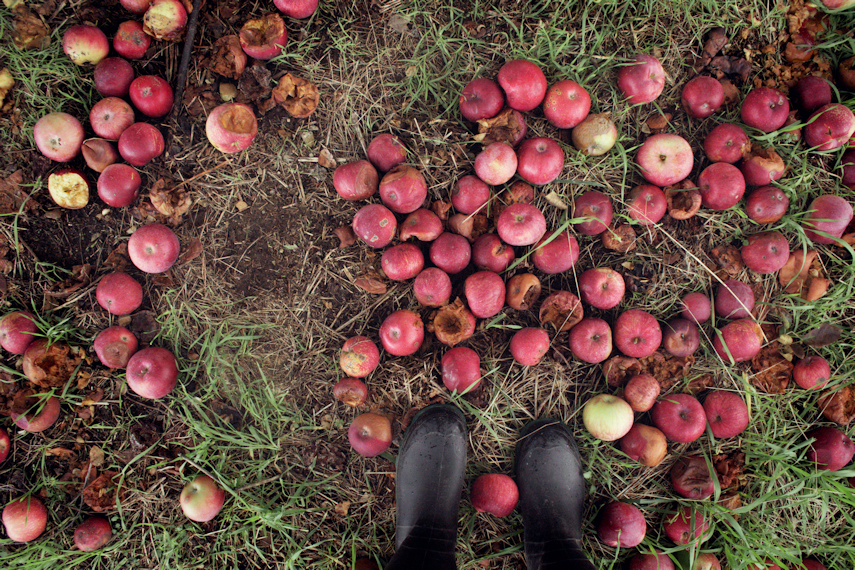Kent Ryden, author of "Mapping the Invisible Landscape", poetically elaborates: "A sense of place results gradually and unconsciously from inhabiting a landscape over time, becoming familiar with its physical properties, accruing history within its confines."
To me, this explains why I find strip malls and box stores so unattractive. It clarifies why shopping at small, local shops and filling my home with unique art and design is so appealing. I want to feel that my home and my town are special and distinct.
The physical and social environments of our childhood, sometimes called "primal landscapes", heavily influence our sense of place. Growing up here in Rhode Island, with an October birthday, I feel a very strong connection to autumn in New England. Its elements - crisp air, colorful leaves, art festivals, jugs of cider, apple picking - combine to create a very special environment for me.
Cider Apples

This past weekend, we went to an apple orchard with my nephew and niece. As I stop today to think about my own primal landscape, I wonder how that childhood experience will help develop their sense of place.
What is your "place" like? What elements define it? What history do you have within it?

No comments:
Post a Comment
Thank you for sharing your thoughts!